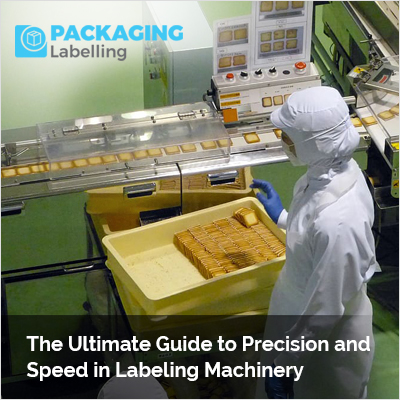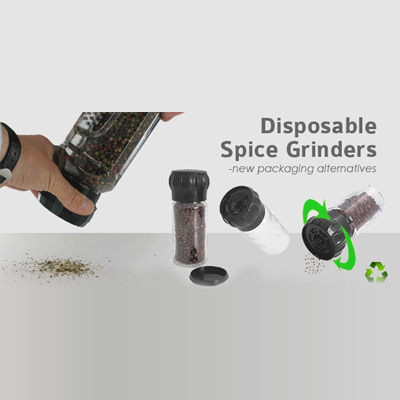The Ultimate Guide to Precision and Speed in Labeling Machinery

Labeling machinery plays a crucial role in various industries, ensuring products are accurately labeled with essential information such as product names, ingredients, barcodes, and other relevant details. Achieving precision and speed in labeling machinery is essential for maintaining efficiency and product quality. Here is the ultimate guide to precision and speed in labeling machinery:
1. Choose the Right Labeling Technology:
- Pressure-sensitive Labels: Pressure-sensitive labels are a versatile and popular labeling technology widely employed across diverse industries. These labels feature an adhesive that activates when pressure is applied, allowing them to adhere to various surfaces. The simplicity and flexibility of pressure-sensitive labels make them suitable for a wide range of products, including packaged goods, cosmetics, and pharmaceuticals. Their ease of application and ability to conform to different surfaces contribute to their widespread use in packaging solutions.
- Glue-based Labels: Glue-based labels offer a reliable solution for applications where a permanent bond is crucial, making them particularly suitable for the food and beverage industry. Unlike pressure-sensitive labels, these labels rely on adhesive properties within the glue to create a lasting connection with the product surface. The permanent nature of the bond ensures that the label remains securely attached, even under challenging conditions such as exposure to moisture or varying temperatures. This makes glue-based labels an optimal choice for products that require durable and long-lasting labeling solutions, meeting the stringent requirements of certain industries.
| Also Read: Efficiency Unleashed: The Role of Labeling Machinery in Modern Industries |
2. Optimal Label Design:
- Design labels that are easy to apply and have a clear, concise layout: When creating labels for products, prioritize a design that facilitates easy application while conveying information. A clutter-free and well-organized layout not only enhances the visual appeal of the product but also ensures efficient labeling processes. Simplifying the design helps minimize potential complications during the application, contributing to overall operational efficiency.
- Consider the size and shape of the product to ensure the label fits appropriately: Tailoring labels to the specific size and shape of the product is crucial for a seamless and professional appearance. Labels that are proportionate to the product enhance aesthetics and prevent issues such as overhanging or inadequate coverage. Careful consideration of the product's dimensions ensures that the label adheres properly, avoiding any visual discrepancies and ensuring a snug fit that aligns with the overall packaging design.
3. Quality of Labels:
- Use high-quality labels to prevent issues like tearing, peeling, or fading: Choosing labels of superior quality is paramount to avoid common issues such as tearing, peeling, or fading over time. High-quality materials contribute to the durability of the label, ensuring it withstands various environmental conditions and maintains its integrity throughout the product's lifecycle. This not only enhances the overall appearance of the product but also prevents potential challenges during transportation and storage.
- Ensure labels are compatible with the labeling machinery and the products they are applied to: Compatibility between labels, labeling machinery, and the products is essential for a smooth labeling process. Selecting labels that align with the specifications of the labeling equipment helps prevent jams, misalignments, and other operational disruptions. Additionally, considering the compatibility with the products themselves, such as their surface material, ensures optimal adhesion and longevity of the labels, further enhancing the overall quality of the labeling process.
4. Appropriate Labeling Equipment:
- Choose labeling machines that match the production speed and volume requirements of your facility: Selecting labeling machines that align with the specific production speed and volume needs of your facility is critical for maintaining efficiency. If production requirements are high, choosing machines capable of rapid label application ensures that labeling processes keep pace with overall production, preventing bottlenecks. Conversely, for smaller-scale operations, appropriately sized labeling equipment avoids unnecessary complexity and resources.
- Opt for modular machines that can be easily integrated into existing production lines: Modular labeling machines offer the advantage of adaptability and seamless integration into existing production lines. This modularity allows for customization based on changing labeling needs or production line configurations. The ease of integration minimizes downtime during installation or upgrades, promoting a more flexible and responsive manufacturing environment. Choosing modular labeling equipment provides scalability and future-proofing for evolving production demands.
5. Labeling Machine Types:
- Wrap-around Labelers: Wrap-around labelers are particularly well-suited for cylindrical products such as bottles and cans. These machines efficiently apply labels around the entire circumference of the product, ensuring complete coverage. Their design is optimized for cylindrical shapes, making them ideal for industries where uniform labeling on curved surfaces is essential.
- Top Labelers: Top labelers specialize in applying labels to the upper surface of products. This type of labeling is commonly used for flat or square-shaped items. Top labelers offer precision in positioning labels on the designated area, making them suitable for products where information needs to be prominently displayed on the top surface.
- Front and Back Labelers: Front and back labelers are designed to simultaneously apply labels to both the front and back of products. This type of machinery is advantageous for items that require information or branding on multiple sides, enhancing visibility and providing comprehensive product information. It streamlines the labeling process for items with dual-facing surfaces.
- In-Mold Labeling (IML): In-Mold Labeling (IML) is a specialized technique where labels are placed in the mold before the product is formed. This process results in a seamless integration of the label with the product, creating a smooth and visually appealing finish. IML is often utilized in industries where a high-end, label-free appearance is desired, such as in the production of plastic containers and packaging.
6. Automation and Integration:
- Integrate labeling machinery with other production line components for seamless workflow: Seamless integration of labeling machinery with other components of the production line is crucial for optimizing workflow. This integration ensures a cohesive and efficient manufacturing process. Labels are applied in sync with other production stages, reducing downtime and enhancing overall productivity. Compatibility and communication between different systems contribute to a streamlined and interconnected production environment.
- Implement automation to reduce manual handling and increase overall speed: Automation plays a key role in improving labeling efficiency by reducing reliance on manual processes. Automated labeling machinery can handle tasks such as label dispensing, application, and quality control with precision and speed. This not only minimizes the risk of human error but also accelerates the labeling process, leading to increased throughput. Integrating automation enhances overall operational speed and contributes to a more cost-effective and competitive production environment.
7. Precision and Accuracy:
- Use sensors and vision systems to ensure accurate label placement: Incorporating sensors and vision systems is essential for maintaining precision in label placement. These technologies enable real-time monitoring and adjustment, ensuring labels are accurately applied to the intended position on the product. By detecting variations in product positioning, these systems contribute to error prevention and enhance the overall accuracy of the labeling process.
- Implement advanced control systems for precise label dispensing and application: Advanced control systems play a crucial role in achieving precision during label dispensing and application. These systems regulate the speed, timing, and pressure of label application, ensuring consistent and accurate results. Implementing sophisticated control mechanisms minimizes deviations in label placement, contributing to a high level of precision throughout the labeling process. This precision is particularly critical for maintaining product aesthetics and complying with labeling standards.
8. Adjustability and Flexibility:
- Choose labeling machines that allow quick and easy adjustments for different label sizes and products: Opting for labeling machines with adjustable features is essential for accommodating various label sizes and products. Quick and easy adjustments enable seamless transitions between different labeling requirements without extensive downtime. This adaptability ensures that the labeling machinery can effectively handle a diverse range of products with varying dimensions and labeling specifications.
- Ensure flexibility to accommodate changes in production requirements: Flexibility in labeling machinery is crucial to respond to changes in production demands. A flexible system can easily adapt to modifications in product specifications, label sizes, or production volumes. This adaptability allows manufacturers to remain agile in dynamic environments, facilitating efficient label application across different product lines and meeting evolving market demands.
9. Regular Maintenance:
- Schedule routine maintenance to prevent breakdowns and ensure consistent performance: Regular maintenance is vital to the reliable operation of labeling machinery. Implementing a scheduled maintenance program helps identify and address potential issues before they escalate into breakdowns. This proactive approach ensures consistent performance, minimizes unexpected downtime, and prolongs the lifespan of the labeling equipment. Regular checks on crucial components contribute to a well-maintained and efficient labeling system.
- Keep the labeling equipment clean and well-lubricated: Maintaining cleanliness and proper lubrication is a fundamental aspect of labeling machine care. Dust, debris, or label adhesive buildup can impede the smooth functioning of the equipment. Regular cleaning helps prevent such issues and ensures that moving parts operate optimally. Additionally, proper lubrication of components reduces friction, extends the lifespan of mechanical parts, and contributes to the overall efficiency and reliability of the labeling system.
10. Employee Training:
- Properly train operators to use the labeling machinery efficiently and troubleshoot common issues: Effective operation of labeling machinery relies on well-trained operators. Providing comprehensive training ensures that personnel can efficiently use the equipment and troubleshoot common issues. This includes familiarizing operators with machine controls, maintenance procedures, and troubleshooting protocols. Proper training enhances operator confidence, reduces the likelihood of errors, and contributes to the overall smooth operation of the labeling process.
- Ensure that employees understand the importance of precision and speed in labeling processes: Employee understanding of the significance of precision and speed in labeling processes is paramount. Clear communication regarding the impact of accurate labeling on product quality, brand reputation, and overall operational efficiency is essential. Instilling a sense of importance in achieving precise and speedy labeling fosters a culture of accountability and diligence among employees, aligning their efforts with the overall goals of the manufacturing process.
11. Quality Control Checks:
- Implement quality control checks to verify that labels are applied accurately and meet quality standards: Quality control checks are indispensable to ensuring that labels are applied accurately and adhere to predefined quality standards. These checks involve visual inspections, measurements, and verifications to confirm that labels are correctly positioned, aligned, and free from defects. Establishing a robust quality control process guarantees that only products meeting the required standards are released, preventing errors and maintaining the integrity of the labeling process.
- Monitor and analyze the performance of the labeling machinery regularly: Regular monitoring and analysis of labeling machinery performance are essential for identifying potential issues early on. Utilizing data and analytics allows for the detection of trends, patterns, or deviations in the labeling process. This proactive approach enables timely adjustments, preventive maintenance, and continuous improvement initiatives, contributing to sustained efficiency and the long-term reliability of the labeling equipment.
12. Compliance with Regulations:
- Ensure that labeling processes comply with industry and regulatory standards: Adherence to industry and regulatory standards is imperative for labeling processes. Ensure that the labels meet legal requirements, including information accuracy, language, and safety guidelines. Compliance with these standards not only avoids legal issues but also builds trust with consumers and demonstrates a commitment to product quality and safety.
- Stay informed about any changes in labeling requirements: Labeling regulations may evolve, necessitating continuous vigilance. Regularly update your knowledge of industry standards and regulatory requirements about labeling. This proactive approach ensures that labeling practices remain compliant with the latest regulations, reducing the risk of non-compliance issues and ensuring continued market access for your products.
13. Continuous Improvement:
- Regularly assess and analyze the labeling process for opportunities to enhance precision and speed: A commitment to continuous improvement is vital for optimizing labeling processes. Regular assessments and analyses of the labeling workflow help identify areas for enhancement in terms of precision and speed. By leveraging data, feedback, and performance metrics, manufacturers can implement targeted improvements, streamline processes, and stay ahead of evolving industry standards.
- Seek feedback from operators and make adjustments based on their experiences: Operators play a frontline role in the labeling process. Encourage open communication and actively seek feedback from operators regarding their experiences with the machinery and processes. Their insights can provide valuable information on operational challenges, potential improvements, and ergonomic considerations.Implementing adjustments based on operator feedback not only enhances efficiency but also fosters a collaborative and engaged workforce.
14. Environmental Considerations:
- Choose labeling materials that align with sustainability goals: Consideration for environmental impact includes the selection of labeling materials. Opt for materials that align with sustainability goals, such as recycled or biodegradable options. This choice not only demonstrates corporate responsibility but also resonates with environmentally conscious consumers, contributing to a positive brand image.
- Implement eco-friendly practices in the labeling process where possible: Beyond material selection, integrate eco-friendly practices into the labeling process. This may involve minimizing waste, reducing energy consumption, or exploring environmentally friendly printing methods. Sustainable labeling practices not only contribute to environmental conservation but also position the company as a responsible steward in the industry.
By following this comprehensive guide, you can optimize the precision and speed of your labeling machinery, leading to efficient production processes and high-quality labeled products.









